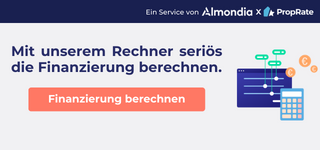Crammed by neighboring houses right and left, front and back? The line of sight is just ten meters? There is an alternative to this: the house on the slope. It promises a different perspective, namely the view of a panoramic landscape spread out in front of the elevated position. This explains why a hillside property is in demand. However, it also has its pitfalls, which the planner should be aware of from the beginning. By the way, also to you as a buyer before you get involved. If you buy a hillside property without checking the subsoil, you could face additional costs that will turn your entire construction financing upside down. Why? Because the excavation, as it occurs even without a basement (but all the more with a basement), will be much more expensive if instead of soil will have to remove rocky subsoil. And rocky ground is likely to be found on slopes, after all, this is a hill or mountain on which you build. The difference between a light soil class and rock catapults the cost up by a factor of ten! If it was a forest plot, tree cutting and root removal is also added. Of course, you will find more on the subject of soil expertise.
What does your designer have to think about when designing a house on a slope?
The problem of unsafe soil class is investigated by making a soil survey. This involves drilling samples at depth at several locations on the property. If you are lucky, this will not encounter rock. However, the soil expertise also already costs a four-digit amount. It is best if a seller can already show you a soil survey, then you don’t have to commission one yourself. With a planned basement in the true sense of a basement, you will have to go quite deep. When building on a slope, however, people like to set the street level (of a house further down the slope, such as on a valley road; not at the top of the knoll) for the basement room and a garage, with the living quarters as the first floor above. This saves the deeper excavation that a house with a basement would have on grade.
The house on the slope will need special protection against water pressure from the uphill area. Drainage measures are more complex to operate here than in a flatland location if you don’t want to be constantly plagued later by wetness seeping in over retaining walls. The other specific planning requirement for the house on the slope is the installation of stairs, not only to the entrance of the house, but in addition, very likely, to parts of the plot, which are located behind and even higher. They will have to be secured against slipping with terracing including walls. Terracing allows better use of these parts of the plot. This allows you to avoid extreme slopes, which are always a source of danger.
How can the house be laid out, with what consequences?
In the actual house planning, it plays a significant role whether the house is located at the top of the slope plot, or, as just described, at the bottom of the slope. This decides the access to the house. I wonder how the garage will be laid out. Whether it’s up or down. You’ll also want to look at neighboring properties, because shade and sunlight incidence play an even bigger role on slopes than on flatlands. For this reason, the southern slope is the most popular, and a northern slope is rather disadvantaged in terms of light yield. To cope with the natural slope, which can be quite steep, the planner uses various approaches. The most common method is to build the house into the slope. So almost no excavation in front; the further back, the more. Besides the already mentioned drainage problem in the rear area, here you can at least use the temperature leveling effect of a surrounding soil. There is nothing of this with the choice of a stilted construction, which requires more insulation. Alternatively, you can still resort to terracing your hillside property, which will probably involve stepped floor areas and lots of stairs inside the house, or backfill the hillside so that you get a level plateau. This would be something for a prefabricated house, as it can be placed on top of the basement (or the foundation slab on the backfill, optimally supplemented by pile foundation), as in the lowlands.
With slope you can not expect to save
The prestige of a successful house on a slope is bought by higher costs than would be incurred if a house of similar size were built on the flat. The building ground must be determined, and if rocks are found, multiplied excavation costs must be calculated. Drainage is more complex. Additional shoring measures and more complicated foundations up to pile foundations may be required, which costs extra. Building on the slope itself is more expensive, because on this terrain it is more difficult to operate with excavators or to place a crane. It will probably all take a little longer if the workers have to lug everything up stairs, down stairs. Which is better; house slope driveway above or house slope driveway below? First and foremost, this will determine where the garage or parking space for the car will be – above the house or below. Sure, under the house is preferable. If the car is not allowed to occupy the front of the house on a driveway above, parking next to it is the only option here, which eats up part of the width of the plot. The driveway below solves this more elegantly and space-saving, with the garage under the house.
Once again, briefly summarized, the essence of building on a slope
It should be remembered here that slope-side drainage must be of higher quality than on structures on the plain, especially as far as pressurized water against retaining walls against the hill is concerned. Furthermore, the second feature of a slope plot is important enough to be highlighted towards the end of our article as well: the fortification of the slope against slipping or its terracing in case of really large slopes. A house on a slope that has been connected to the sewer system from above will need a lift station to discharge wastewater into it. Of course, it is better if the sewer connection is located downhill. A special playground for the design of a house nestled against the hill is the design of terraces and their transitions to the appropriate level of the slope, because here, after all, several are possible. In general, the exterior and garden design is something for advanced. Here are equally clever solutions for multiple entrances to the house on more than one level, so there is no need for the ugly basement entrance of an ordinary house, for example, to a granny apartment. If the hill is not particularly high, it is even conceivable to provide an entrance on the road above and one on the valley road.
This and similar topics regularly find your interest? Are you currently in the planning stage of your own construction project? Then sign up for our newsletter. There is still much for you to discover. With Newsletter you will no longer miss any contribution.




